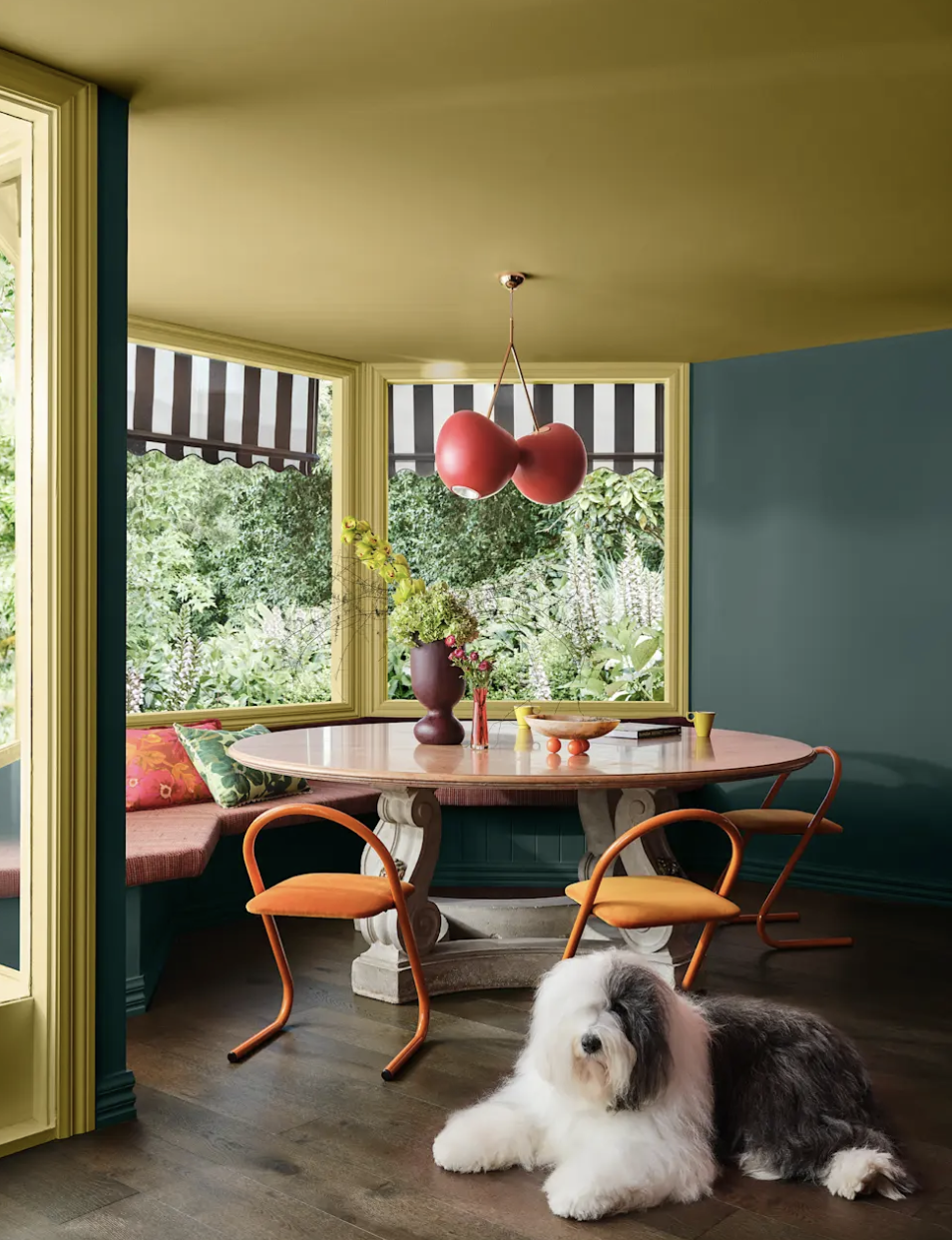Colour Drenching - Adding Sophistication and colour - the antidote to white
Hello, design lovers! If you’re craving a fresh, bold look for your home this year, let’s talk about colour drenching—a technique that’s sweeping interiors the world over. Imagine wrapping your space in a single, mesmerising hue, creating a cocoon of harmony and drama. No more timid accent walls or safe white trims—this trend is all about fearless self-expression. Let’s explore why this immersive style is captivating homeowners and how you can master it, too
What is Colour Drenching?
Colour drenching involves painting every surface in a room—walls, ceilings, skirting boards, trims, and even built-in cabinetry—in the same shade or hue. The result? A seamless, monochromatic oasis that feels both luxurious and deeply intentional. While the trend has roots in European design, it’s found a passionate following in Australia, where bold, sun-soaked palettes and modern minimalism thrive.
By eliminating contrasting trims and ceilings, colour drenching creates a cohesive, modern aesthetic. Whether you choose a moody terracotta (*Dulux Rumors*) or a serene stone grey (*Sherwin-Williams Sashay Sand*), the effect is sophisticated and immersive.
Space-Enhancing Illusion - Monochromatic rooms can feel larger and airier, as the absence of stark boundaries allows the eye to travel uninterrupted. This is particularly effective in smaller spaces like apartments or compact living areas.
Drama Meets Tranquility - Deep hues like emerald or midnight blue add opulence and intimacy, perfect for bedrooms or dining areas. Soft neutrals like sage or warm beige create calming retreats, ideal for open-plan living zones. As Melbourne designer Simone Haag notes, “A drenched room feels curated, as though the colour slowly reveals itself.”
Practical Perfection - This technique cleverly disguises architectural flaws, such as uneven walls or dated fixtures. Using varying sheens—matte walls with glossy trims, for example—adds subtle dimension while maintaining tonal harmony.
How to Master Colour Drenching
1. Select the Right Shade - Consider the room’s natural light and purpose. North-facing spaces with abundant sunlight can handle deep, saturated tones, while dimmer rooms may suit lighter shades. Earthy, organic colours—think ochre, olive, or muted plum—are dominating 2025’s palettes for their timeless warmth.
2. Experiment with Finish - Matte walls paired with satin or glossy trims (in the same colour!) add depth without disrupting the monochromatic flow. A semi-gloss ceiling can also reflect light subtly, enhancing the room’s ambiance.
3. Layer Textures - Prevent a flat appearance by mixing materials. Linen cushions, velvet upholstery, rattan lighting, or timber furniture add tactile interest. As Patrick O’Donnell of Farrow & Ball advises, “Texture ensures the room feels inviting, not overwhelming.
4. Start Small - Test the trend in enclosed spaces like powder rooms, studies, or hallways. For a playful twist, apply it to a child’s bedroom in a cheerful tone like buttery yellow or soft lavender.
5. Balance with Neutrals - Introduce natural wood tones, crisp white linens, or metallic accents to soften the intensity. A timber dining table or brass pendant light adds warmth and prevents the space from feeling monotonous.
Ready to Transform Your Space? Colour drenching isn’t just a trend—it’s a design philosophy that celebrates confidence and cohesion. Whether you’re refreshing a heritage home or a contemporary apartment, this technique invites you to reimagine your walls as a canvas for self-expression. And remember: paint is forgiving. If you crave change, a new hue is just a weekend project away. So grab a brush, choose a shade that speaks to you, and let your home tell its story—one immersive, harmonious room at a time.




